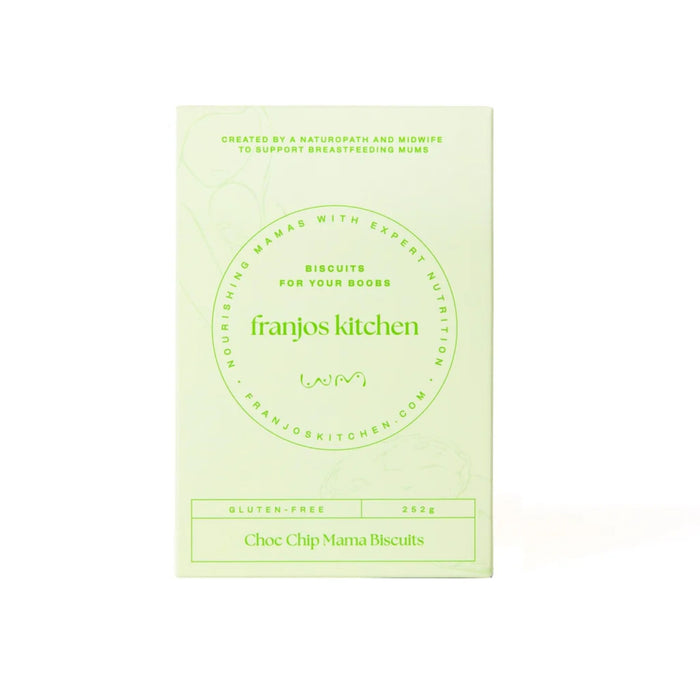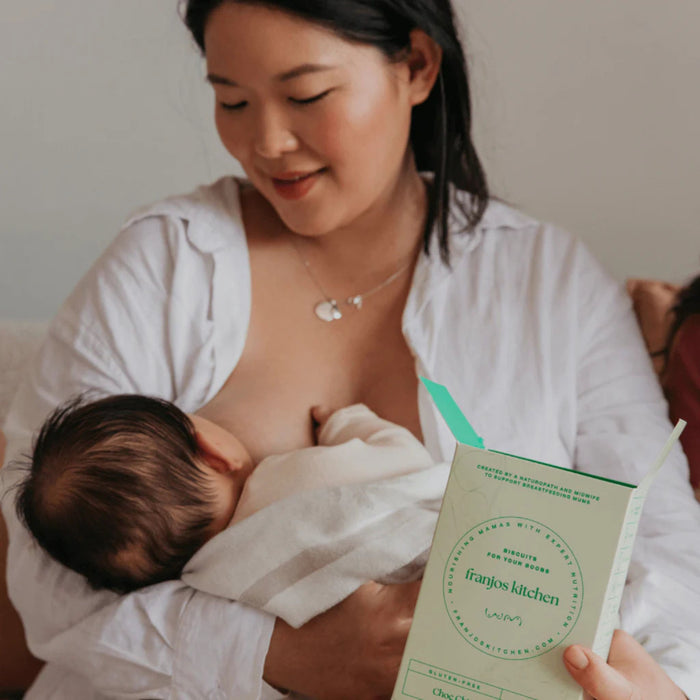Welcome, mama, to the beautiful journey of breastfeeding! As you embark on this incredible adventure of nourishing your little one, it's essential to equip yourself with knowledge, support, and practical tips to make the experience as smooth and fulfilling as possible.
In this guide, we'll explore eight invaluable tips for breastfeeding success, offering gentle guidance and expert advice to support you every step of the way.
Disclaimer: Are you struggling with breastfeeding? Is your new little babe showing signs of feeding aversion? Don’t panic. We understand first-hand how difficult and scary this can be, so scroll to the end of this blog for expert resources designed to address your concerns head-on.
Related: My Story with Postpartum Anxiety and How I Overcame it.
What’s inside?
- Nutrition for breastfeeding mamas
- Staying hydrated while breastfeeding
- Essential breastfeeding supplies
- Dealing with cracked nipples
- Latching techniques
- Breastfeeding clothes and covers
- Self-care for new mums
- Resources for all things breastfeeding
1. Nutrition for breastfeeding mamas
Okay, first things first: nutrition matters. We understand all too well how easy it can be to let things like quality food intake fall by the wayside when you’ve got a brand new little bundle taking up all your time, but trust us – good food can make a world of difference when it comes to breastfeeding.
The Royal Women’s Hospital of Victoria’s ‘Good Nutrition for Breastfeeding Guide’ recommends keeping things simple while incorporating five key food groups and nutrients into your diet:
- Protein: This includes meat, chicken, eggs, cheese, yoghurt, and vegetarian options like legumes, tofu, and nuts.
- Calcium: Best gained from dairy products like milk (and maybe a little ice cream to curb those cravings). Fish with edible bones is another great option, like tinned salmon. If you drink nut-based milks, that’s okay – just check the labels and opt for more calcium-rich milk brands and types.
- Vitamin D: Most people’s vitamin D levels are kept level naturally, but you can always boost your vitamin D from foods like egg yolks and oily fish.
- Iron: A common deficiency during and after pregnancy, iron is important to keep up your energy levels. Iron-rich foods include meat, chicken, and fish, as well as green leafy vegetables, legumes, wholegrains, and even Milo!
- Iodine: While most people get enough iodine in their diets from foods like seafood and dairy, this may not be enough for breastfeeding women. Look for iodised salt to add to your meals and, if you’re concerned, speak to your doctor about an iodine supplement.
Aside from keeping you healthy and energised, what you eat affects your breast milk. This means that your baby will benefit from all these excellent nutrients that get filtered into your milk supply!
Galactagogues: What you need to know
Galactagogues are foods, herbs, or medicines that can help to increase breast milk supplies by upping your body's prolactin levels (which is a hormone critical to milk production).
In short, ‘Galactagogue’ is a Greek word for substances that promote lactation.
While it’s essential to consult with your doctor about any herbal remedies or medications, some galactagogue foods might just aid in your natural milk supply. These include:
- Fenugreek
- Dark leafy greens
- Chickpeas and lentils
- Grains and nuts
- Sesame seeds and flax seeds
- Brewers Yeast
You can also try natural galactagogue-style supplements like Franjo’s Kitchen’s lactation cookies and muesli. These powerhouse lactation cookies are nourishing and delicious. Full of natural galactagogues including oats, brewers yeast and flaxseeds. Along with the superfood’s chia seeds, coconut oil and buckwheat flour these tasty snacks not only help you increase your milk supply whilst breastfeeding but also load you and your baby up with vitamins, minerals and good fats.
2. Staying hydrated while breastfeeding

Did you know that breast milk is composed of over 80% water? This is why babies don’t drink plain water before 6 months old – and also why staying well-hydrated is crucial for new mamas, benefiting both your milk production and your overall health.
Health experts recommend consuming approximately 3.7 litres of water daily while breastfeeding, which may seem daunting. However, with a few simple strategies, staying hydrated can become more manageable.
- Strategically place water bottles: Given the unpredictable nature of parenthood, consider situating several pre-filled water bottles around your home, ensuring hydration is always within reach during hectic moments.
- Use a water bottle that tracks intake: This is a game-changer. Invest in a quality water bottle with markings to help you track your daily water intake, like our gorgeous BINK Mama Bottle range.
- Establish a routine: Incorporate drinking water into your breastfeeding routine by making it a habit to have a glass before or after each breastfeeding session. Over time, your body will naturally associate nursing with hydration.
- Opt for water-rich foods: Hydration doesn't solely rely on liquids; incorporating water-rich foods into your diet can also contribute to your daily intake. Foods such as cucumber, strawberries, watermelon, oranges, skim milk, and broth-based soups are excellent choices due to their high water content.
- Listen to your body: Rather than fixating on specific water intake goals, prioritise listening to your body's cues. Pay attention to feelings of thirst and respond accordingly by drinking water whenever you feel the need.
Hydration supplements
If you’re still struggling to get enough H2O, a natural hydration supplement could be effective.
We recommend Mini + Me’s Hydramama range, hydration support drinks that pack in electrolytes, magnesium, methylated folate, and vitamin B6 and C.
These powders are safe to use during and after pregnancy, and they come in some delicious flavours like apple and ginger, watermelon and lime, passionfruit and orange, and blackcurrant.
Remember, it’s always recommended to speak with your healthcare provider before starting any supplements or medicines to ensure they’ll be safe and effective for you and your baby.
3. Essential breastfeeding supplies
Now for the fun part! Having the right supplies can make a world of difference in your breastfeeding journey – it’s one of the biggest tips for breastfeeding we can give, because we know first-hand how useful these items can be.
At Coco & Bundle, we specialise in hand-picking products that promote successful and supportive breastfeeding experiences for your and your little babe.
Some of our top recommendations include:
- Breast pads provide added protection against leaks and discomfort, keeping you dry and comfortable throughout the day.
- Nipple creams made from natural ingredients like beeswax and essential oils can help soothe and protect sore nipples.
- Breastfeeding pillows ensure proper positioning and comfort during feeding sessions.
- Breastfeeding covers can help mamas feel confident and secure when breastfeeding out and about. Plus, we’ve got some gorgeous designs to choose from!
- Breastfeeding clothes specially designed for easy, comfortable, and hassle-free maneuvering can make things so much easier.
4. Dealing with cracked nipples

According to the Australian Breastfeeding Association, sore nipples during early stages of breastfeeding often stem from improper attachment of your baby to the breast. This can occur when your baby fails to take a sufficient mouthful of breast tissue and/or doesn't draw the nipple far back enough into their mouth.
In this case, we recommend checking out their tips for breastfeeding positions and attachment. It might take some trial and error, but see how you go implementing these changes – and, if you’re still struggling with latching, see your GP or an International Board Certified Lactation Consultant (IBCLC) for help.
Hold on, what’s an IBCLC? IBCLC stands for International Board Certified Lactation Consultant. They have gone through rigorous training, which includes a specific number of hours of lactation education, clinical practice under supervision, and passing a comprehensive exam. In simple terms, an IBCLC has a higher level of training and expertise in helping mothers with breastfeeding compared to a regular lactation consultant.
You can also access volunteer-based lactation counsellors through the Australian Breastfeeding Association who are trained to give support and personalised assistance for breastfeeding women. They can’t, however, offer medical advice – this is where you’d go to an IBCLC or your GP.
How to calm cracked nipple pain
To help ease the pain and discomfort of cracked nipples (which are, by the way, incredibly common during breastfeeding), try some of these hacks:
- Allow your nipples to air dry after feeding to promote healing
- Avoid using harsh soaps or lotions that may further irritate the skin
- Apply a hydrogel breast disc to each breast to act as a protective barrier while providing soothing relief. We love the Women's Wellness Boutique Hydronips
- Gently press a warm or cold water compress (like a damp face cloth) to your nipples after each feed
- Try rubbing a little breast milk onto your nipples after each feed and letting it dry
- Use the Women's Wellness Boutique Silver Nursing Cups to bring instant relief while promoting healing through anti-inflammatory and anti-bacterial 925 silver
- Use an enriched nipple treatment overnight such as the Bare Mum Nipple Balm
If you’re still experiencing pain, or if your cracked nipples aren’t healing well, speak to your doctor or midwife for some more individualised care. They may recommend certain medications or over-the-counter creams that might just do the trick.
Hot tip: We love the Bare Mum Warm & Cool Breast Inserts for ultimate soothing comfort while breastfeeding. These wonderful breast inserts are great during those early days postpartum when your breastmilk comes in and you may experience breast engorgement.
5. Latching techniques

One of the most common struggles women experience during breastfeeding is latching. We get it – when your little babe doesn’t want to latch properly, it can lead to all kinds of emotions and negative thoughts.
What am I doing wrong? Is my baby getting enough nutrition? What position should I try instead? Why can’t I feed my baby?
Frustrating, stressful, and even scary, improper latching can be cause for a downturn in your postnatal mental health. But don’t worry – it’s not always a concern for your newborn.
There are two main types of latching techniques: baby-led breastfeeding and mother-led breastfeeding. Try these step-by-steps from raisingchildren.net.au and see how you go:
Baby-led breastfeeding
- Lie back at a 45-degree angle and place your baby facing you on your bare chest.
- Support your baby’s back and under his or her bottom.
- Let your bub’s instincts take over. Newborn’s are great at knowing where to go and what to do, so give your bub some time to find your nipple.
- Expect your baby to feed at an angle, so gently move with them to provide support throughout.
- If you feel pain at any time, gently insert your pinky finger into the corner of your baby’s mouth to break the suction. Have a little break, then try again.
Mother-led breastfeeding:
- Sit upright with your back supported.
- Hold your baby close to your body, level with the natural fall of your breasts, then position them on their side with their chest against yours.
- Using a gentle motion, stroke your nipple from your baby's nose to their lips. This action prompts them to open their mouth wide.
- Once your baby's mouth is wide open, swiftly bring them to your breast, aiming your nipple toward the roof of their mouth. Your baby will naturally close their mouth around your breast and begin sucking.
6. Pumping breast milk
While breastfeeding directly from the breast is a beautiful experience, pumping breast milk can be a supportive option for many mamas. Some may choose pumping due to various reasons such as returning to work, managing a low milk supply, or involving partners or caregivers in the feeding process.
Pumping breast milk offers flexibility in feeding times, supports you maintaining your milk supply, and ensures your little babe receives nourishment even when apart. Plus, it provides bonding opportunities for your partner and family members during feeding times!
It is important to note that for most women it is not advised to use a breast pump until after your milk supply regulates at around 8-12 weeks postpartum. This is to avoid an over-supply of breast milk which can lead to problems such as blocked ducts and mastitis.
Some women may need to express from birth if deemed medically necessary for their baby. Other women may struggle with low milk supply. Whatever the reason may be, if you are planning to pump before your supply regulates it is best practice to do so on advice from an IBCLC.
Tips for breast milk pumping
- Gentle massage and warmth on your breasts can help your milk to flow
- Set the pump to the lowest setting to start with, and increase gradually to what feels comfortable
- Listen to your body’s cues and pump until your breasts feel empty
- Expect pumping sessions typically last 15-30 minutes per breast
For a bunch more information and insights, check out the Royal Women’s Hospital Victoria’s guide on how to use a breast pump.
Paced bottle feeding
When bottle-feeding, babies can sometimes take in more breast-milk than needed, leading to overfeeding. Paced bottle feeding is important as it allows babies to control their intake, promoting healthier feeding habits.
To pace feed effectively, try these helpful habits from the Australian Breastfeeding Association:
- Hold your baby upright, supporting their head and neck gently
- Opt for a slow-flow teat to mimic breastfeeding
- Guide the teat along your baby’s little lips, encouraging a wide mouth opening
- Gradually adjust the bottle’s tilt to maintain a consistent milk flow
- Offer breaks during the feed to prevent overfeeding
- Don’t worry if your bub doesn’t finish the whole bottle – if they start to pull away or show signs or fullness, then your job is done!
7. Breastfeeding clothes and covers
Breastfeeding-friendly clothing and covers can make nursing sessions more comfortable and convenient for you and your little babe.
Look for tops with discreet nursing access or specialised breastfeeding bras for easy feeding on the go. Some of our favourite stylish maternity clothes brands are:
Did you know that it’s against the law in Australia to discriminate against breastfeeding in public? If you do feel more comfortable with a bit more privacy, though, consider using a breastfeeding cover or scarf. Covers are also handy for when friends and family come to visit and you’d prefer to be a little more discreet.
8. Self-care for new mums

Finally, it’s essential to practice self-care as a new mama. We know, we know – it’s probably the last thing on your list now you have a tiny little human to care for around the clock.
But let us tell you, from experience, it’s more important than you realise. After all, you can’t pour from an empty cup!
Take time to rest and recharge whenever possible, allowing yourself moments of relaxation and rejuvenation amidst the demands of caring for your newborn.
Lean on your partner, family, and friends for support, and don't hesitate to reach out to your healthcare provider if you need assistance or guidance.
Hot tip: PANDA has a treasure trove of invaluable self-care and mental health resources for new mums and dads. Their website is easy to navigate and their information is bite-sized and accessible, so have a browse for some expert advice.
Remember, you are doing an incredible job nourishing and nurturing your little one, and you deserve all the love and support in the world.
Related: Alice’s Story: How I Practice Self-Care (PANDA)
Resources for all things breastfeeding
So many new mamas out there struggle with breastfeeding. From having low milk supply due to medications or conditions to battling feeding aversions, there are so many reasons that some women are unable to breastfeed.
If this sounds like you, we recommend speaking with your doctor or a specialist. Before you go to an appointment, though, it can be incredibly reassuring to arm yourself with knowledge.
- The Australian Breastfeeding Association: When breastfeeding doesn’t work out
- The Australian Breastfeeding Association: Wondering how long to keep breastfeeding?
- The Royal Women’s Hospital Victoria: Low milk supply
- The Royal Women’s Hospital Victoria: Breastfeeding problems
- Your Baby’s Bottle-feeding Aversion by Rowena Bennett
- PANDA: Medication use in the perinatal period















0 comments